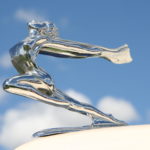Top 10 Wine Myths
Top 10 Wine Myths
“Wine gets better with age.” A cute analogy but far from the truth. “The more expensive a wine costs, the better it is.” If you go by this theory, you’ll go broke searching for great tasting wines. My point being, there are so many falsehoods associated within the world of wine that grape lovers far and wide who believe in these age old myths are sadly misinformed. This month, lets take a look at a number of these traditional lore and get a better understanding between half-truth and reality.
#1…WINE GETS BETTER WITH AGE
Though this is in fact a true statement, truth is, as a whole, only a select few wines fit this category. Less than one tenth of 1% of all the wine in the world produced each vintage will actually benefit from long term aging. Most wines are meant to be consumed within a very short period. The standard rule of thumb is to drink white wines within 2 to 4 years of their vintage date, 2 to 6 years for reds.
There is no specific formula as to how long any wine may age. Some have lasted well over 100 years, some less than 100 weeks. If you were to think that the straw covered bottle of Chianti you inherited from your relatives is a tastefest waiting to happen, the fact is, no magician in the world could bring that beast back from the dead. Its gone, its plonk, its vinegar by now. Remember my saying: its better to drink a wine a day too early rather than a day too late. As far as the adage goes, use it only as a compliment to wine, because as we all know, only women get better with age.
#2…THE MORE EXPENSIVE A WINE COSTS, THE BETTER IT IS.
Savvy wine shoppers know better than to believe this disjointed phrase but many novices still regard this notion as fact. Price never reflects the quality of what may be found in any bottle of wine. Surely enough, many pricey collectable’s are great examples of fine wines and their cost mirrors that fact, but there have been times, too numerous to mention, that I have shook my head in amazement having tasted a mediocre wine with an astronomical price tag.
Many shoppers with deep pocket books often regard paying enormous amounts for wines as a method of impressing with its price tag rather than the juice inside. Their odds may increase on finding a quality quaff with this selection process but in no way is it a sure fire certainty. Great wines come in all price ranges. As far as high pricing, lets leave that distinction to older vintages and small lot produced wines that fall under the supply and demand category to merit any credit to the above myth.
#3…RED WINE WITH MEAT – WHITE WINE WITH FISH
For years, this logic was as tradition as “No whites shoes after Labor Day”. With the explosion of culinary choices available to the extensively educated palates of today’s foodies, you may as well throw out this theory along with your Beta tapes and Nehru jackets. This rule was long meant to be broken, thanks in part to a ever expanding selection of wines available in the marketplace and most important, better wine making practices.
Most of all, our eating habits have changed. We experiment more, try new things, expose our tastebud’s to foods that are new and exciting. We are free to do this with wines as well, resulting in eye opening pairing sensations in the process. White wines have migrated from the soft and delicate to complex and full bodied, whereas red wines range from light and fruity to meaty and high octane. The marriage possibilities between different foods and wines is endless. The fun of doing so is one of life’s greatest pleasures. Chateau Margaux with broiled salmon, go for it. Konsgaard Chardonnay with lamb, let me be the first in line. As long as it tastes good, there is no longer any right or wrong way in pairing your favorite food and wine. Just enjoy.
#4…WINE IS BAD FOR YOUR HEALTH
Nearly every medical journal and periodical in recent years have lauded the health benefits associated with the drinking of wine. Its effects include decreased risk of heart disease, reducing stress, increasing blood flow, lowering blood pressure and bad cholesterol, and fighting certain cancers. Keep in mind that the consumption of alcohol is not for everyone. Those with medical complications or taking prescribed medicines should first consult their physicians before consuming any amount of wine. For those of us who are fortunate enough to enjoy our favorite beverage on a daily basis, we hope that it is done in moderation and with responsibility. That is the best advise that can be given to help make wine a healthy part of our daily diet.
#5…WINES WITH CORKS ARE BETTER THAN WINES WITH SCREW CAPS
Suggesting that a wine sealed with a cork is of better quality that one sealed in screw cap is simply for the close minded and nonconformists. In recent years, the cork industry has been befelled with a number of problems, from shortage of quality cork to widespread TCA cork taint that plagued up to 15% of every bottle of wine sealed. That means that for every case of wine you bought, you could expect at least one or more bottles to be corked, tainted, or problematic.
Nothing can be more gut wrenching than opening an expensive bottle of wine, more so a bottle cellared and opened many years from now, only to find that it is no longer acceptable to drink. With the introduction of new screw cap technology and other alternative closures currently preserving wines until they are ready to open, their results have been overwhelmingly positive. I have yet to open a bad bottle that was sealed with any of the new style of closure.
The pageantry of removing a cork and hearing the resounding pop will always remain a feast for the senses. But do you want your wine to be remembered for its cork, or its taste? Until the industry can guarantee me that cork sealants are 100% foolproof, I will continue to herald the benefits of screw cap enclosures and enjoy the fresh, untainted flavors their wines exhibit.
#6…REMOVING THE CORK AND LETTING A WINE BREATH MAKES IT TASTE BETTER
By simply removing the cork from a bottle of wine and letting it sit does absolutely nothing at all. Its like trying to cool off Joe Louis Arena with a window size air conditioner. The amount of wine exposed to air in the neck of the bottle is so insignificantly small that it is impossible for any chemical reaction to take place.
The only way to accomplish this ritual is by pouring the contents of the bottle into a spacious decanter, helping to burn off excess sulphur and alcohol that inhibits a wines full character. In doing so, its flavors and aromas are allowed to smooth out, resulting in a enhanced drinking experience.
#7…HIGHER RATINGS MEAN BETTER WINES
I know many people who buy their wines by this creed. What they are actually doing is putting all their trust in someone else’s palate. Rating are in fact only a guideline for purchasing wines. They are not bible and they are not always reflective of a wines quality.
I have numerous bottles in my cellar that I enjoy immensely that were panned quite low by rating standards. Equally so, I have tasted many ratings darlings that I wouldn’t go out of my way to purchase none less recommend to customers. Great wines, like cars, books, food and everything else in life, are a matter of taste. Use ratings only as a tool. In the end, let yourself be the judge. Trust your own palate. Its more fun, and in the long run, it may save you tons of cash and the embarrassment of tasting a bottle you really didn’t enjoy.
#8…SNIFFING THE CORK TELLS YOU IF A WINE IS BAD
This exhibition is such a snobberish ritual, anyone caught doing so should be given a time out in the corner of the room. Unless you have superhuman sensory powers to detect the slightest hint of mold or cork imperfections, at best, you may come away with a red tipped nose and a whole lot of snickering stares. If a cork in tainted, it will be reflected in the taste of the wine. That is why tasting a small amount, in the sniff-swirl-taste method, before pouring the bottle is more preferable. When presented with a cork, squeezing it is a more fail safe experiment. If it feels wet and mushy as opposed to dry and firm, chances are, your wine may be infected. So remember, sniff at your own risk.
#9…SHIZAH IS BETTER THAN SYRAH
That’s like saying Fume Blanc is better than Sauvignon Blanc, Chateau Petrus is better than Merlot, or Chianti is better than Sangiovese. All the above facts are one in the same. Shiraz is Syrah, Fume Blanc is Sauvignon Blanc, Chateau Petrus is Merlot, and Chianti is Sangiovese. They are no better because they are one in the same.
The term Shiraz is used for Syrah based wines produced throughout Australia and South Africa. In the Northern Rhone region of France, Syrah is known by the names Cote-Rotie, St.-Joseph, Hermitage, Crozes-Hermitage and Cornas, the villages that create these wines. In the United States, great expressions of Syrah can be found all across this great land, where even a few wineries call their brands Shiraz.
#10..RESERVE WINES MEAN BETTER QUALITY
Terms such as Reserve, Special Reserve, Vintners Reserve, and Private Reserve are more marketing and advertising genius than reality. Unless you research the wine making practice’s of the vintner who produces these special wines, chances are, these unregulated terms used by many in the industry mean little more than fancy adjectives on a wine label. The same holds true for wines designated with the term Old Vine and various Vineyard Designated wines. In all these labeling cases, let the buyer beware.
I certainly hope we all are able to come away with a better understanding about some of the half truths, myths, inaccuracies and misconceptions that surround the mysteries of wine. Harmless as they may be, they all leave room for discussion and debate. If you have any questions regarding these or any other topics you deem necessary to discuss or share with our readers, please forward them via this website. Any and all are much appreciated in helping make wine a less confusing subject of conversation



